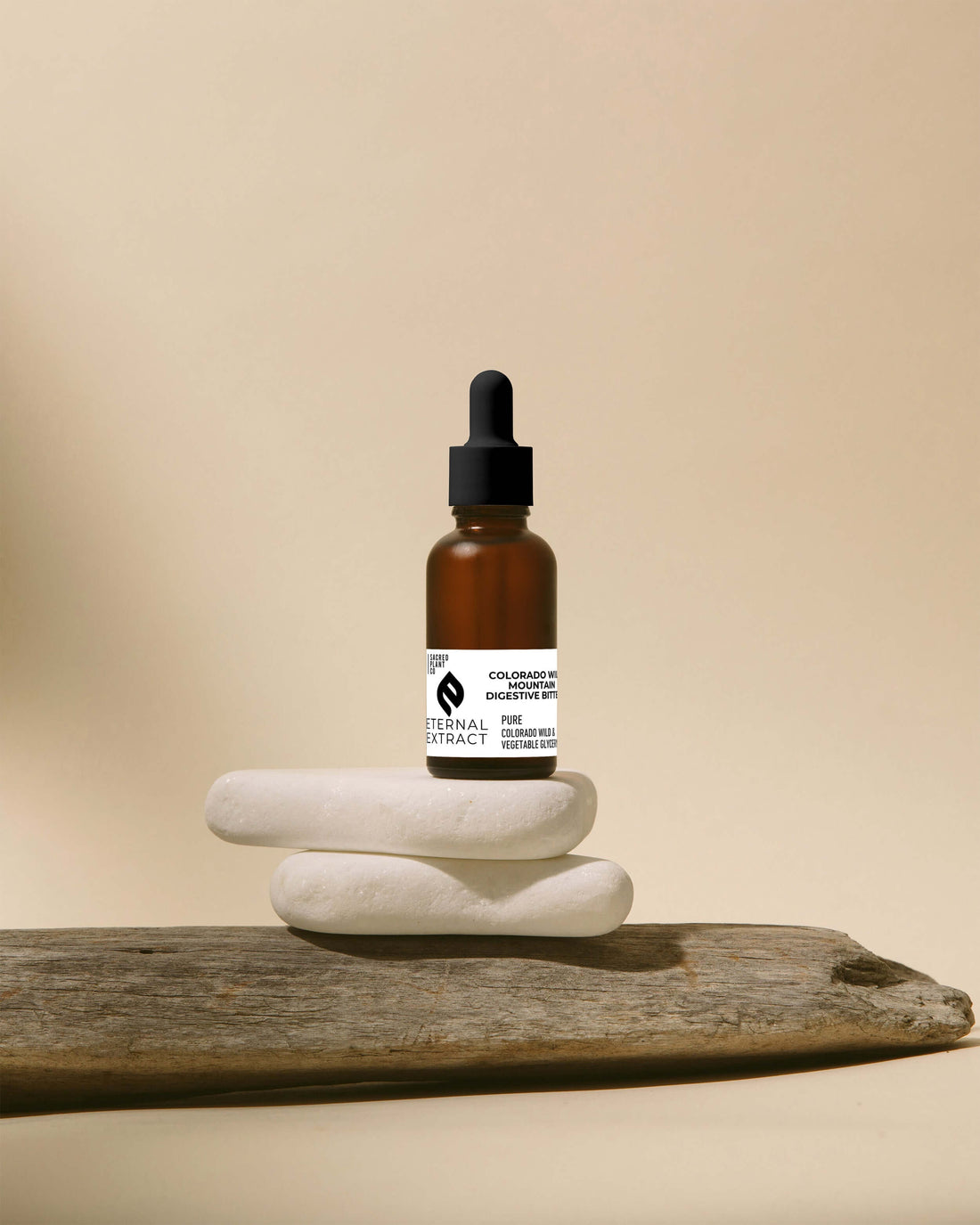The 21-Day Liver Reset Protocol
 Your liver performs over 500 biochemical functions daily, yet most of us never think about supporting this tireless organ until something goes wrong. We built this 21-day liver reset herbs protocol after studying traditional hepatic remedies and cross-referencing them with current hepatology research. What surprised us most was how simple, accessible plants can measurably support the liver's natural regeneration cycles.
Your liver performs over 500 biochemical functions daily, yet most of us never think about supporting this tireless organ until something goes wrong. We built this 21-day liver reset herbs protocol after studying traditional hepatic remedies and cross-referencing them with current hepatology research. What surprised us most was how simple, accessible plants can measurably support the liver's natural regeneration cycles.
This isn't a generic detox. We're targeting specific hepatic pathways—Phase I and Phase II detoxification, bile flow optimization, and cellular membrane stabilization—with botanicals that have centuries of traditional use and emerging clinical validation.
Understanding Your Liver's Regeneration Cycle

The liver is the only visceral organ capable of complete regeneration. Remove 70% of healthy liver tissue, and it will regrow to full size within weeks.1 This regenerative capacity relies on hepatocyte replication and the clearing of damaged cells through autophagy.
Why 21 days matters: Research shows that consistent botanical intervention over three weeks can influence bile acid composition, reduce inflammatory markers like ALT and AST, and improve glutathione synthesis—the master antioxidant your liver depends on.2 We chose this timeline because it aligns with measurable shifts in hepatic enzyme activity without demanding an unsustainable commitment.
Your liver detoxifies in two main phases. Phase I uses cytochrome P450 enzymes to make toxins water-soluble. Phase II conjugates those compounds with sulfur, glutathione, or glycine so they can exit via bile or urine. Many liver detox herbs support Phase II preferentially, which is critical because an overactive Phase I without adequate Phase II creates more oxidative stress.
The Five Cornerstone Herbs for Hepatic Support
Milk Thistle (Silybum marianum): The Hepatoprotective Standard
Milk thistle contains silymarin, a complex of flavonolignans that stabilize hepatocyte membranes and increase glutathione by up to 35% in some studies.3 Silymarin also inhibits lipid peroxidation, the process that damages cell membranes during oxidative stress.
We use milk thistle seeds because they concentrate silymarin in the seed coat. Studies examining cirrhosis, hepatitis, and fatty liver disease consistently show silymarin reduces liver enzyme elevation and supports histological improvement over 3-6 months.4 The seeds must be ground fresh to preserve their medicinal potency—pre-ground seeds oxidize quickly and lose effectiveness.
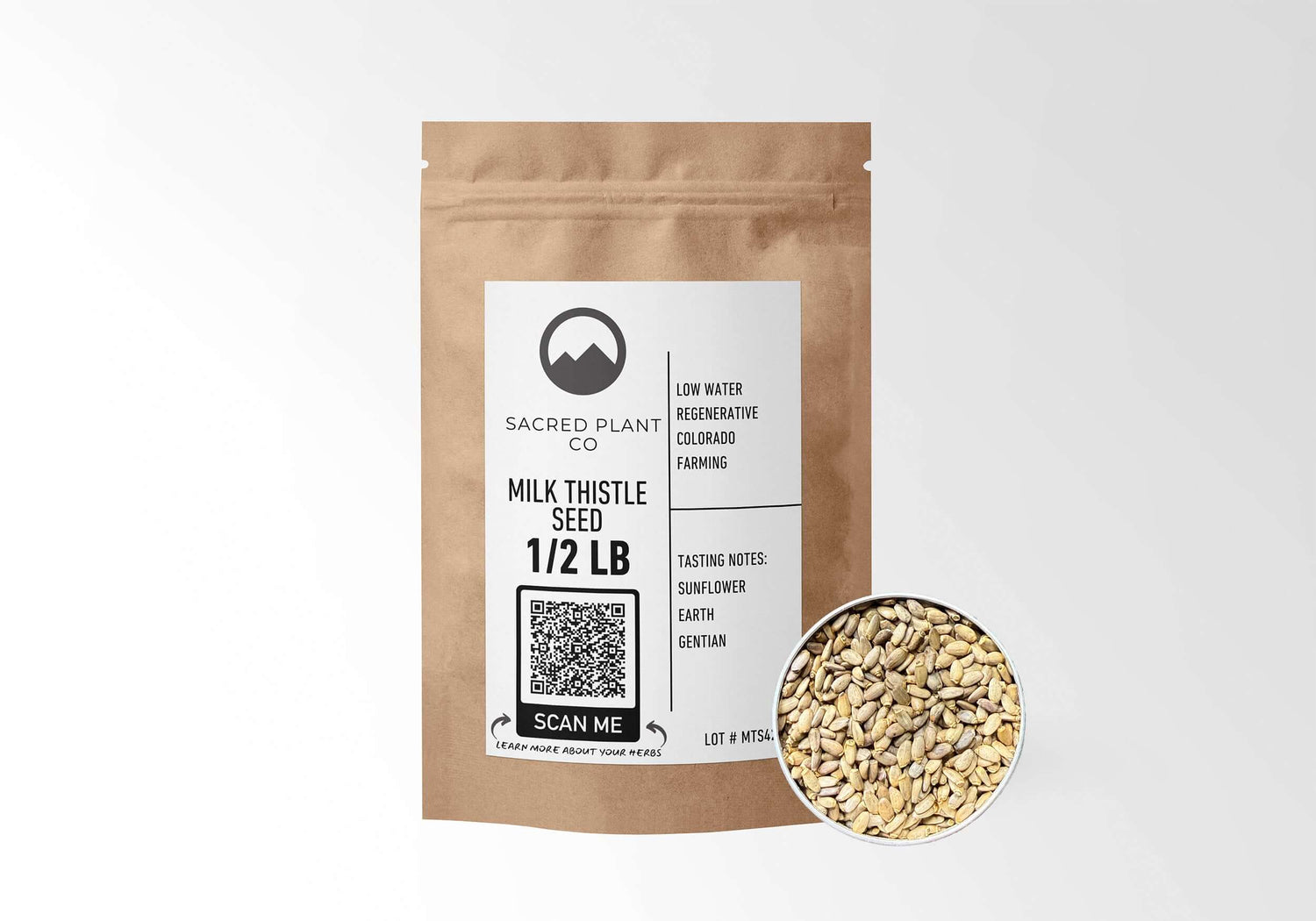
Milk Thistle Seeds
Premium Silybum marianum seeds with high silymarin content. These whole seeds retain their full medicinal potency until you're ready to use them.
Dandelion Root (Taraxacum officinale): Choleretic and Diuretic
Dandelion root stimulates bile production (choleretic effect), which is essential for clearing fat-soluble toxins and supporting healthy cholesterol metabolism. Traditional European herbalism used dandelion as a "liver and blood cleanser," and modern research confirms it increases bile flow by 40% in animal models.5
The bitter compounds—taraxacin and taraxacerin—trigger bitter receptors on the tongue and in the gut, initiating a cascade that enhances digestive secretions from the stomach, pancreas, and liver. Dandelion also acts as a gentle diuretic, helping the kidneys eliminate water-soluble waste without depleting potassium like pharmaceutical diuretics.
Dandelion root must be prepared as a decoction (simmered) rather than a simple infusion to extract the deeper medicinal compounds. The root harvested in fall has higher inulin content, supporting beneficial gut bacteria that influence liver inflammation.
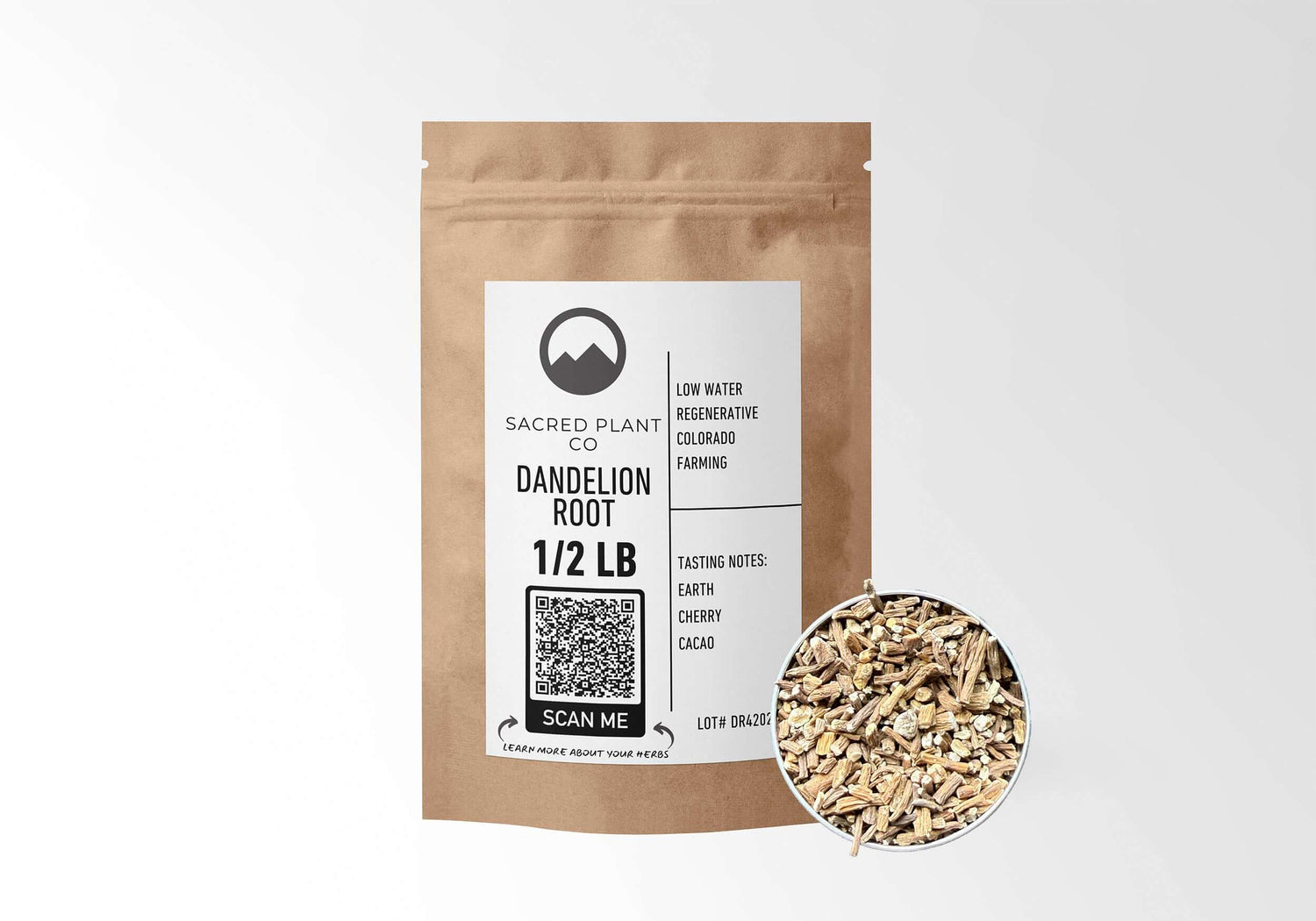
Dandelion Root
Cut and sifted Taraxacum officinale root. Our dandelion root is carefully dried to preserve its bitter principles and choleretic properties.
Burdock Root (Arctium lappa): Blood Purifier and Lymphatic Tonic
Burdock root has been used across East Asian and European traditions as a "blood purifier," a term that translates to support for the liver's filtration and the lymphatic system's waste removal. Burdock contains inulin, mucilage, and polyacetylenes with antimicrobial and anti-inflammatory properties.6
Research suggests burdock protects against liver damage from environmental toxins and alcohol. One study showed burdock extract reduced liver injury markers and oxidative stress in rats exposed to carbon tetrachloride, a potent hepatotoxin.7 Burdock also supports skin health—a visible sign of improved detoxification, since the skin eliminates waste when the liver is overwhelmed.
Like dandelion, burdock root requires decoction to extract its deep medicinal constituents. It has a mild, earthy taste and combines beautifully with dandelion root for a synergistic liver-kidney support formula.
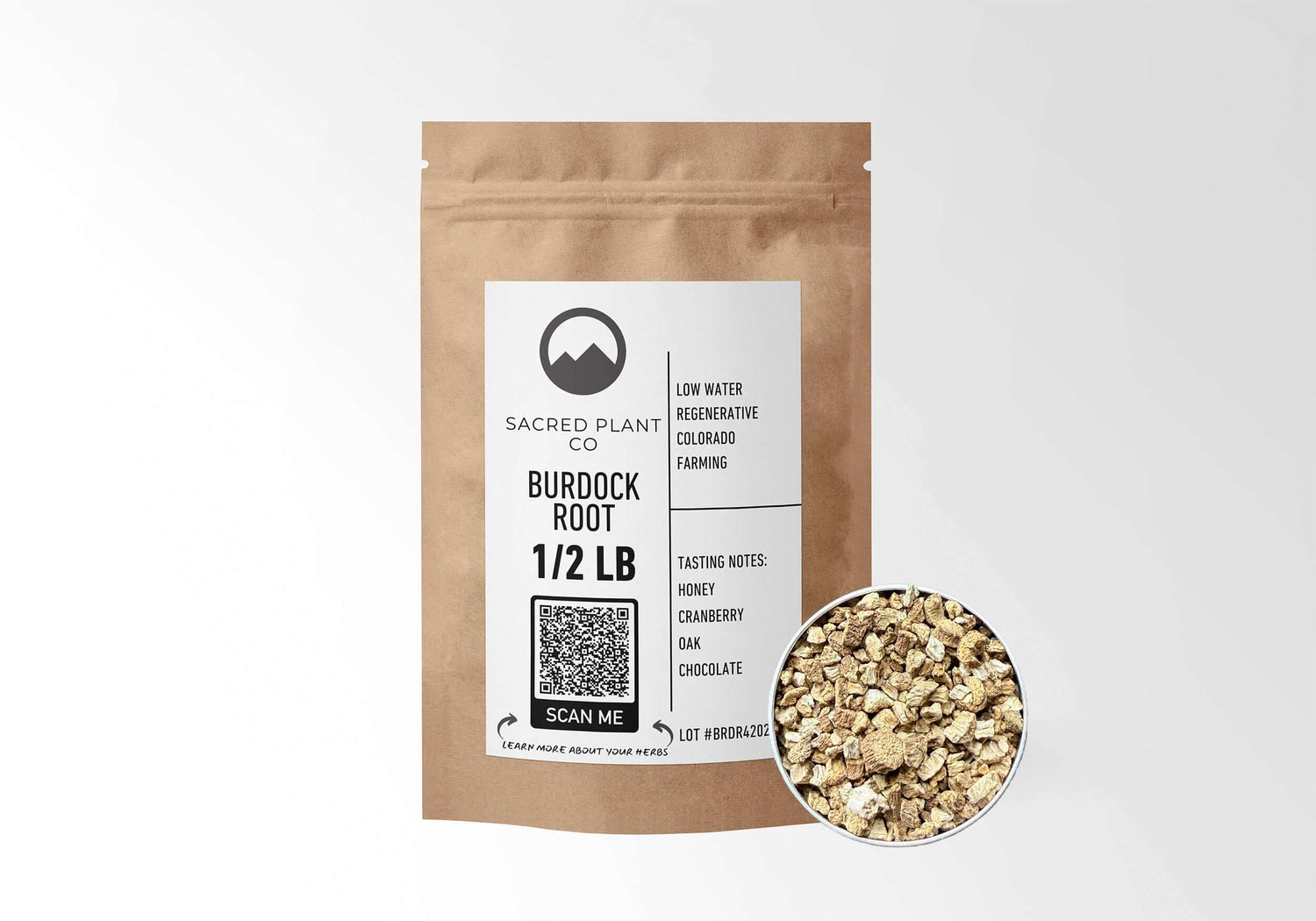
Burdock Root
Hand-harvested Arctium lappa root. Our burdock is wild-grown and carefully processed to maintain its full spectrum of beneficial compounds.
Green Tea (Camellia sinensis): Antioxidant and Fat Metabolism Modulator
Green tea catechins, especially epigallocatechin gallate (EGCG), reduce hepatic fat accumulation and improve insulin sensitivity. Multiple studies link regular green tea consumption to lower rates of fatty liver disease and reduced liver enzyme levels.8
Green tea also upregulates antioxidant enzymes (superoxide dismutase, catalase) that protect hepatocytes from oxidative damage during detoxification. The polyphenols in green tea inhibit inflammatory pathways like NF-κB, which are overactive in chronic liver conditions.
The key to medicinal green tea is proper preparation. Water that's too hot destroys delicate catechins. Water that's too cool won't extract them efficiently. Temperature and timing matter as much as the quality of the leaves.
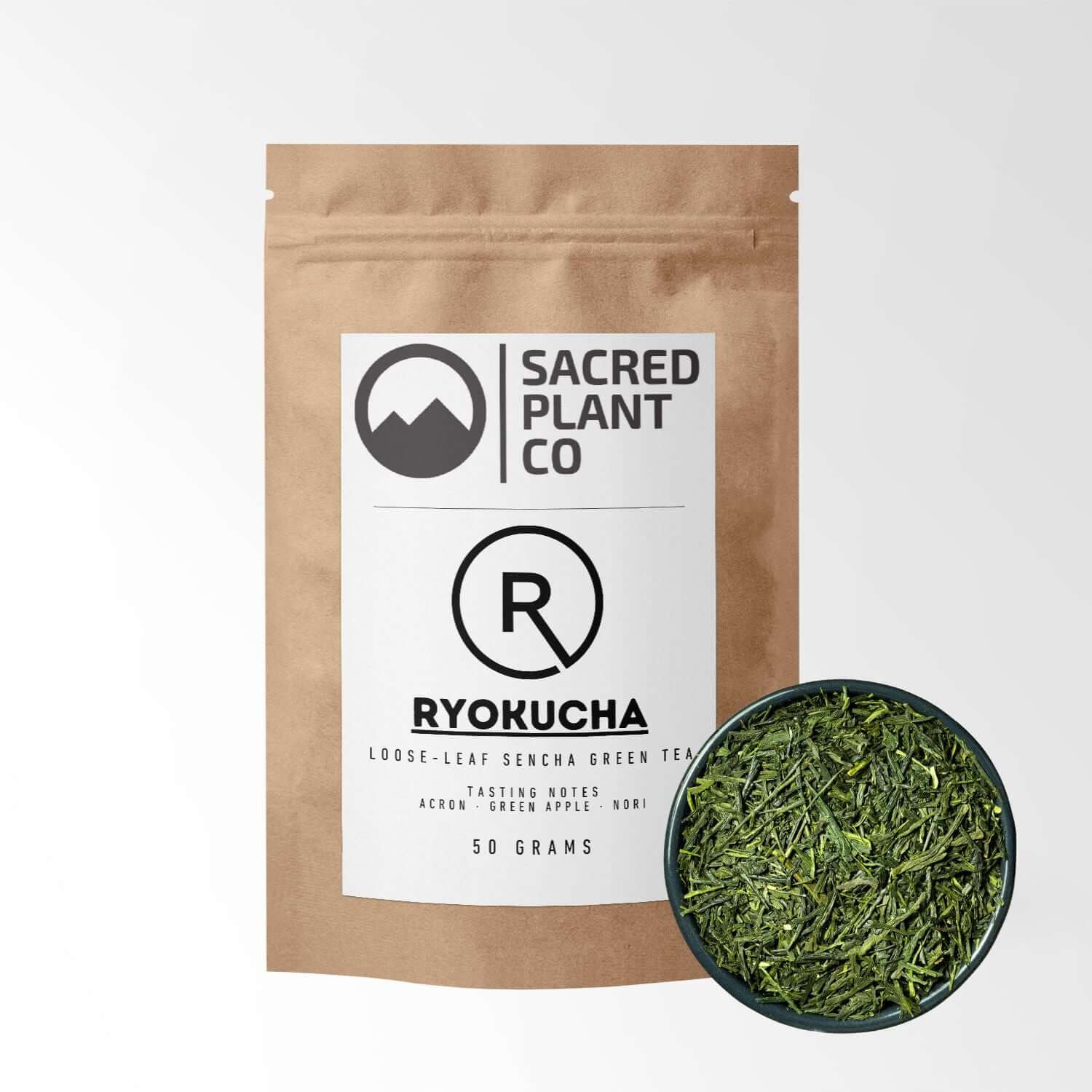
Ryokucha Loose Leaf Sencha Green Tea
Premium Japanese sencha green tea with exceptional EGCG content. Our Ryokucha is shade-grown and carefully steamed to preserve maximum catechin levels.
Cilantro (Coriandrum sativum): Heavy Metal Chelation Support
Cilantro has gained attention for its potential to support heavy metal elimination, particularly lead, mercury, and aluminum. While human studies are limited, animal research shows cilantro increases urinary excretion of lead and reduces tissue accumulation.9 The proposed mechanism involves chelation by sulfur-containing compounds and enhanced kidney clearance.
In the context of liver health, reducing heavy metal burden matters because metals like mercury disrupt mitochondrial function and increase oxidative stress in hepatocytes. Cilantro works synergistically with chlorella or spirulina, which bind metals in the gut and prevent reabsorption.
Fresh cilantro is ideal, but dried cilantro retains much of its chelation capacity. The herb is safe for most people, though a small percentage have a genetic variant (OR6A2 gene) that makes cilantro taste soapy.
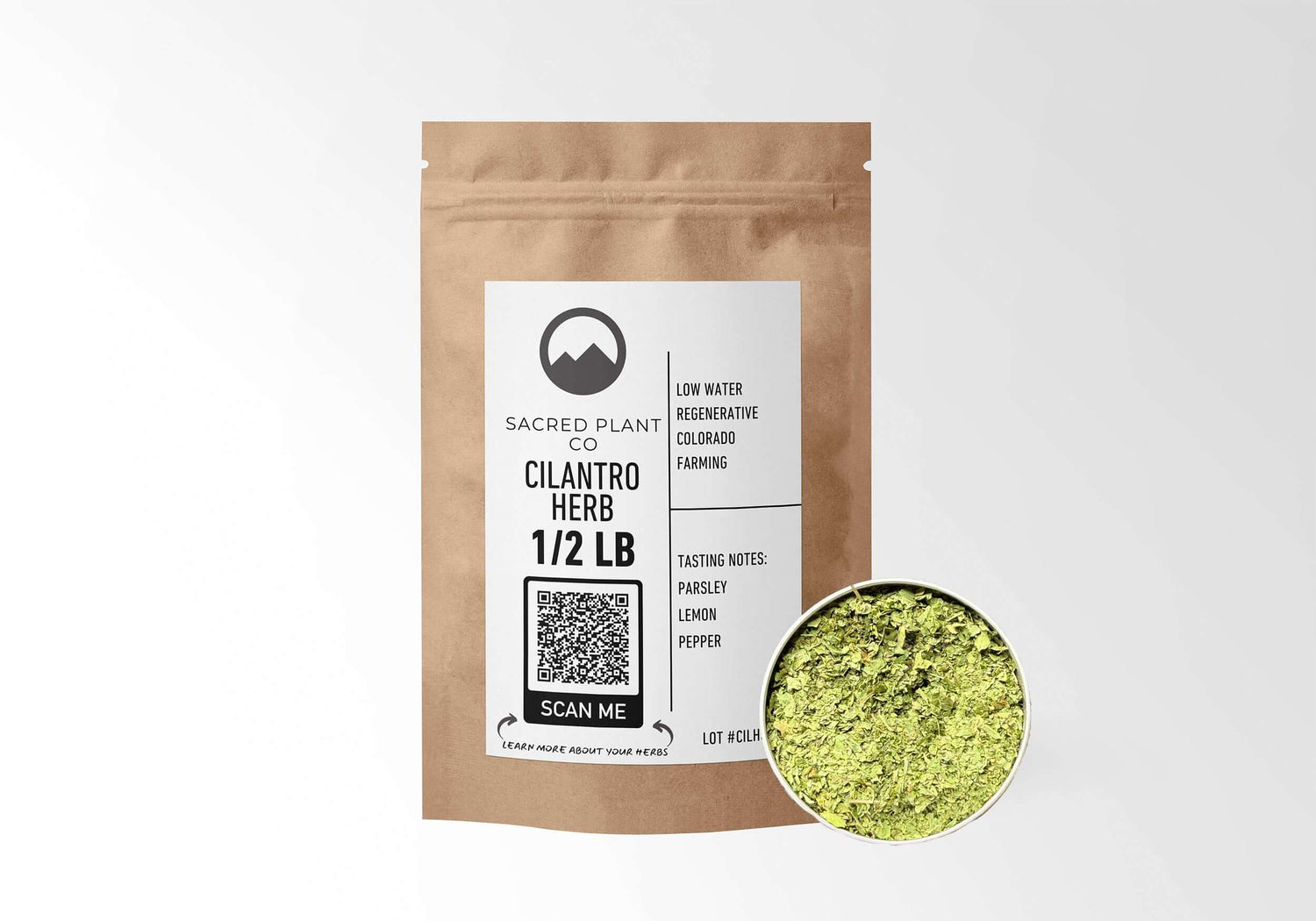
Cilantro Herb
Cut and sifted Coriandrum sativum leaves. Our cilantro is carefully dried at low temperatures to preserve its chelation-active compounds.
The 21-Day Protocol: Week-by-Week Implementation
Week 1: Foundation Phase (Days 1-7)
Goal: Establish baseline herbal support and assess tolerance. Begin gently to avoid overwhelming detox pathways.
 Daily routine:
Daily routine:
- Morning (upon waking): 1 cup warm lemon water to stimulate bile production
- Breakfast: 1 cup green tea (properly steeped at 170-180°F)
- Mid-morning: Milk thistle tea (1 tsp freshly ground seeds steeped 10 min)
- Lunch: Add 1/4 cup fresh or 1 tsp dried cilantro to meal
- Afternoon: Dandelion root decoction (1-2 tsp simmered 15 min)
- Dinner: Burdock root decoction (1 tbsp simmered 20 min)
- Evening: Light stretching or 15-minute walk to support lymphatic flow
Why each step matters: Lemon water's citric acid stimulates stomach acid and bile. Green tea provides antioxidant coverage early when cortisol peaks (cortisol increases oxidative stress). Spacing herbs throughout the day maintains steady detox support without spiking and crashing. Evening movement promotes lymphatic drainage, which assists toxin clearance.
Week 2: Intensification Phase (Days 8-14)
 Goal: Increase herbal doses and add digestive bitters to optimize bile flow and gut motility.
Goal: Increase herbal doses and add digestive bitters to optimize bile flow and gut motility.
Daily routine (add to Week 1 baseline):
- Before each meal: 5-10 drops digestive bitters in 1 oz water (or chew a small piece of fresh dandelion root)
- Increase milk thistle to twice daily (morning and evening)
- Increase green tea to 2-3 cups daily
- Combine dandelion and burdock roots in equal parts for a stronger liver-lymphatic formula
- Add castor oil pack (optional): Apply cold-pressed castor oil to flannel, place over liver area, cover with heat pack for 30-45 minutes, 2-3 times this week
Why each step matters: Digestive bitters trigger the bitter reflex, increasing bile, hydrochloric acid, and pancreatic enzymes. This improves digestion and prevents endotoxin formation from poorly digested food (endotoxins stress the liver). Combining dandelion and burdock creates synergistic support for both hepatic and lymphatic pathways. Castor oil packs—used in Ayurveda and naturopathy—appear to stimulate lymphatic drainage and reduce inflammation.10
Week 3: Maintenance and Integration (Days 15-21)
 Goal: Sustain herbal support, evaluate results, and plan long-term habits.
Goal: Sustain herbal support, evaluate results, and plan long-term habits.
Daily routine (continue Week 2 protocol with these additions):
- Add probiotic-rich foods daily (sauerkraut, kimchi, kefir) to support gut-liver axis
- Dry brushing before shower (5 minutes, always toward heart) to enhance lymphatic flow
- Journaling: Note energy levels, digestion quality, skin changes, sleep quality
- Optional: Epsom salt bath twice this week (2 cups salts, 20 minutes) to boost magnesium and sulfate for Phase II detox
- Consider adding chlorella powder (1 tsp daily) with cilantro for enhanced heavy metal binding
Why each step matters: The gut-liver axis is bidirectional; dysbiosis (bacterial imbalance) produces lipopolysaccharides that enter the liver via the portal vein, triggering inflammation. Fermented foods reduce this burden. Dry brushing mechanically moves lymph, which carries cellular waste. Epsom salts provide sulfate and magnesium; sulfate is a cofactor for Phase II sulfation pathways.
Supporting Practices for Maximum Benefit
Hydration and Timing

Drink half your body weight in ounces of water daily (150 lbs = 75 oz). Inadequate hydration thickens bile, impairs toxin excretion, and concentrates waste in kidneys. Add a pinch of sea salt or trace mineral drops to every third glass to maintain electrolyte balance. Drink herbal decoctions warm when possible—warmth enhances absorption and feels more nourishing to the digestive system.
Macronutrient Strategy
Prioritize bitter greens (arugula, endive, dandelion greens), cruciferous vegetables (broccoli, Brussels sprouts—contain sulforaphane, which boosts Phase II enzymes), and sulfur-rich foods (garlic, onions, eggs). Reduce alcohol to zero for 21 days; even moderate intake disrupts hepatic detox enzymes. Limit processed seed oils (corn, soybean, safflower), which oxidize easily and increase hepatic lipid peroxidation. Focus on olive oil, coconut oil, and grass-fed butter for cooking fats.
Sleep and Stress Reduction
The liver performs peak regeneration between 1-3 AM according to Traditional Chinese Medicine's organ clock, and circadian biology confirms heightened autophagy during deep sleep. Aim for 7-9 hours nightly. Practice diaphragmatic breathing (4-7-8 technique) before bed to activate parasympathetic tone, which enhances digestion and detoxification. Consider drinking a cup of warm burdock-dandelion tea one hour before bed—the gentle bitterness signals the body to prepare for rest and repair.
The Art of Herbal Preparation
Quality matters as much as the herbs themselves. Use filtered water for all preparations. Never boil delicate green tea—use water just below boiling. Always simmer roots (dandelion, burdock) with a lid on to prevent volatile oils from escaping. Grind milk thistle seeds fresh each time—oxidized seeds lose potency within hours. Store herbs in airtight containers away from light and heat. Glass jars are ideal; plastic can leach compounds into herbs over time.
What to Expect: Realistic Outcomes and Timelines
Days 1-5: You may experience mild headaches, fatigue, or irritability as your body mobilizes stored toxins. This is common and temporary. Increase water intake, rest when needed, and consider reducing herbal doses slightly if symptoms are intense. The bitter taste of the herbs may take adjustment—this is normal. Some people notice increased urination from dandelion and burdock's diuretic effects.
Days 6-14: Energy typically improves. Skin may look clearer (reduced breakouts, less oiliness or dryness). Digestion often becomes more regular—many people notice they're having 1-2 well-formed bowel movements daily, a sign that elimination pathways are working. Some notice reduced sugar cravings as blood glucose regulation improves. The herbal routine becomes habitual and less burdensome.
Days 15-21: Mental clarity and sustained energy are frequently reported. Bloating and sluggish digestion usually resolve. You may notice you wake feeling more refreshed, a sign that liver regeneration during sleep is improving. If you're tracking liver enzymes (ALT, AST, GGT), improvements may be detectable after 4-6 weeks of continued support, not within 21 days—so consider this protocol a foundation, not a quick fix.
Safety, Contraindications, and When to Seek Medical Advice
Pregnancy and breastfeeding: Avoid burdock root and high-dose herbal protocols. Dandelion and green tea in culinary amounts are generally safe. Consult a qualified herbalist or healthcare provider before beginning any concentrated herbal protocol.
Medication interactions: Milk thistle may alter drug metabolism via cytochrome P450 enzymes (particularly CYP3A4, CYP2C9). If you take immunosuppressants, anticoagulants, or medications with narrow therapeutic windows, consult your doctor. Dandelion's diuretic effect can potentiate lithium or other drugs affected by fluid balance. Green tea in high doses may interfere with iron absorption and certain beta-blockers.
Pre-existing liver disease: If you have hepatitis, cirrhosis, or elevated liver enzymes, work with a hepatologist or integrative medicine physician. Herbal support can complement medical care but should never replace it. Some conditions require pharmaceutical intervention. Always have baseline liver function tests before starting intensive herbal protocols if you have known liver issues.
Allergies: Individuals allergic to Asteraceae family plants (ragweed, marigold, chrysanthemum) may react to dandelion, burdock, or milk thistle. Start with small test doses. If you experience hives, difficulty breathing, or throat swelling, discontinue immediately and seek medical attention.
Gallstones: Choleretic herbs like dandelion stimulate bile flow, which could theoretically provoke a gallstone to move. If you have a history of gallstones, consult a healthcare provider before using bile-stimulating herbs.
Seek immediate medical attention if: You experience jaundice (yellowing of skin or eyes), severe abdominal pain, dark urine with pale stools, or unexplained bruising. These may indicate acute liver dysfunction requiring urgent evaluation.
Beyond 21 Days: Long-Term Hepatic Wellness
This protocol is a reset, not a permanent regimen. After 21 days, consider cycling herbs (2 weeks on, 1 week off) to prevent tolerance and allow your body's innate detox systems to function independently. Maintain baseline support with 1-2 cups dandelion or green tea daily and periodic milk thistle (1-2 weeks per quarter, especially after holidays or periods of dietary indulgence).
Long-term liver health depends more on daily habits than periodic protocols. Prioritize whole foods, regular movement, stress management, and minimizing exposure to environmental toxins (pesticides, plastics, alcohol, unnecessary medications). Annual liver function panels (AST, ALT, GGT, bilirubin, albumin) provide objective feedback on your liver's status.
Many people find that after completing this protocol, they naturally crave bitter foods more and sweet foods less. This is a sign that your taste receptors and metabolic signaling have recalibrated. Honor these cravings—they're your body's wisdom speaking.
The Synergy Principle: Why This Combination Works
We didn't select these five herbs randomly. They work synergistically across multiple hepatic pathways:
- Milk thistle stabilizes cell membranes and increases glutathione (Phase II support)
- Dandelion root stimulates bile flow (toxin elimination) and supports kidney clearance
- Burdock root reduces inflammation and supports lymphatic drainage
- Green tea provides broad-spectrum antioxidants and modulates fat metabolism
- Cilantro assists heavy metal elimination and adds sulfur compounds for Phase II conjugation
Together, they address oxidative stress, inflammation, bile stasis, lymphatic congestion, and toxic burden—the five primary mechanisms of liver dysfunction. No single herb does this alone. The protocol's power lies in strategic combination and proper preparation.
Digestive Bitters: The Missing Link
While the five cornerstone herbs form the foundation of this protocol, digestive bitters deserve special mention. The bitter taste receptors (T2Rs) found on your tongue also line your gut, pancreas, and liver. Activating them triggers a chain reaction: increased saliva, gastric acid, bile secretion, and pancreatic enzyme release.11
Modern diets are almost devoid of bitter flavors. We've bred bitterness out of vegetables and sweetened everything. This deprives our digestive system of a crucial signal. Reintroducing bitters before meals—whether through dandelion root tea, fresh arugula, or a concentrated bitters formula—restores this ancient communication pathway.
You can also make your own bitters by combining equal parts dried dandelion root, gentian root, and orange peel in vodka (let steep 2-4 weeks, strain). Whether you choose a prepared formula or craft your own, take 5-10 drops in water 15 minutes before each meal during Week 2 and 3 of the protocol.
Frequently Asked Questions
Can I do this protocol while working full-time?
Yes. The protocol is designed for real life. Prepare decoctions in larger batches (3-4 cups at once) and reheat portions throughout the day. Many people prep their week's supply of dried herbs on Sunday—portion them into daily containers so you can grab and go. The most time-intensive part is the initial learning curve; by week 2, the routine takes 15-20 minutes total per day.
Do the herbs really need to be prepared fresh each time?
For milk thistle, yes—grind seeds fresh. The volatile compounds oxidize within hours. For decoctions (dandelion, burdock), you can prepare 2-3 days' worth and store in the refrigerator. Reheat gently before drinking. Green tea should be steeped fresh each time for optimal catechin content, but you can re-steep the same leaves 2-3 times within a few hours.
Can I use capsules or tinctures instead of whole herbs?
You can, though whole herbs offer advantages. The act of tasting bitterness triggers digestive secretions that capsules bypass. Decoctions provide minerals and mucilage that concentrated extracts lack. That said, tinctures are excellent for travel or convenience. If using capsules, choose standardized extracts (80% silymarin for milk thistle) and take with meals. We offer tinctures for all these herbs for those who prefer convenience—just remember you're trading some therapeutic benefit for ease of use.
Will I experience a "healing crisis" or severe detox symptoms?
Most people experience mild, transient symptoms (headache, fatigue, slight digestive changes) in the first few days as the body mobilizes stored waste. Severe reactions are uncommon and usually indicate an overly aggressive approach or an underlying condition. If symptoms are intense, reduce herbal doses by half and increase water intake dramatically. True healing should feel progressively better, not worse. Listen to your body.
How do I know if the protocol is working?
Subjective markers include improved energy, better digestion (regular bowel movements, reduced bloating), clearer skin, stable mood, and improved sleep quality. Objective markers require lab work: reduced liver enzymes (ALT, AST, GGT), improved lipid profile, stable blood glucose. Labs are more reliable after 4-8 weeks of consistent support, not within 21 days. Many people find that their digestion improves noticeably—this is often the first sign of hepatic support working.
Can I repeat the protocol?
Yes. Repeating quarterly or biannually is common and safe for most people. Allow at least 4-6 weeks between cycles to prevent herb tolerance and to assess baseline function. If liver enzyme levels normalize and energy is good, you may not need repeated intensive protocols—just baseline support with teas and whole foods. Some people do a 21-day reset each season change (spring and fall) as preventive maintenance.
What if I can't stand the taste of the herbs?
Start with small amounts and gradually increase. Mix decoctions with a bit of honey or lemon. The bitter taste often becomes pleasant as your palate adjusts—many people crave bitters after 1-2 weeks. If taste remains an issue, use tinctures in juice or water, or consider capsules. However, try to preserve some bitter exposure, as the taste itself is therapeutic. Even chewing a small piece of fresh dandelion root before meals provides benefit.
References
- Michalopoulos GK. Liver regeneration. J Cell Physiol. 2007;213(2):286-300. doi:10.1002/jcp.21172
- Abenavoli L, Capasso R, Milic N, Capasso F. Milk thistle in liver diseases: past, present, future. Phytother Res. 2010;24(10):1423-1432. doi:10.1002/ptr.3207
- Wellington K, Jarvis B. Silymarin: a review of its clinical properties in the management of hepatic disorders. BioDrugs. 2001;15(7):465-489.
- Federico A, Dallio M, Loguercio C. Silymarin/Silybin and Chronic Liver Disease: A Marriage of Many Years. Molecules. 2017;22(2):191. doi:10.3390/molecules22020191
- Chávez-Santoscoy RA, Gutiérrez-Uribe JA, Serna-Saldivar SO. Phenolic composition, antioxidant capacity and in vitro cancer cell cytotoxicity of nine prickly pear juices. Plant Foods Hum Nutr. 2009;64(2):146-152.
- Chan YS, Cheng LN, Wu JH, et al. A review of the pharmacological effects of Arctium lappa (burdock). Inflammopharmacology. 2011;19(5):245-254. doi:10.1007/s10787-010-0062-4
- Lin SC, Lin CH, Lin CC, et al. Hepatoprotective effects of Arctium lappa on carbon tetrachloride and acetaminophen-induced liver damage. Am J Chin Med. 2000;28(2):163-173.
- Pezeshki A, Safi S, Feizi A, Askari G, Karami F. The Effect of Green Tea Extract Supplementation on Liver Enzymes in Patients with Nonalcoholic Fatty Liver Disease. Int J Prev Med. 2016;7:28. doi:10.4103/2008-7802.173051
- Aga M, Iwaki K, Ueda Y, et al. Preventive effect of Coriandrum sativum (Chinese parsley) on localized lead deposition in ICR mice. J Ethnopharmacol. 2001;77(2-3):203-208.
- Walker SC, Towers GHN, Mitchell JC. Ultraviolet-mediated antibiotic activity of some Compositae species. Can J Bot. 1976;54(22):2626-2633.
- Janssen S, Depoortere I. Nutrient sensing in the gut: new roads to therapeutics? Trends Endocrinol Metab. 2013;24(2):92-100. doi:10.1016/j.tem.2012.11.006



